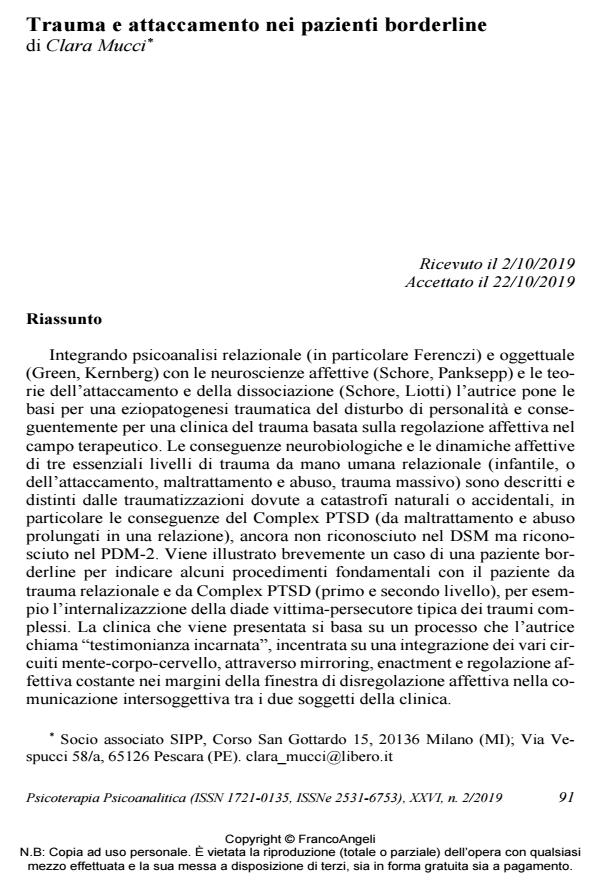Trauma and attachment in borderline patients
Journal title PSICOTERAPIA PSICOANALITICA
Author/s Clara Mucci
Publishing Year 2020 Issue 2019/2
Language Italian Pages 18 P. 91-108 File size 199 KB
DOI 10.3280/PSP2019-002005
DOI is like a bar code for intellectual property: to have more infomation
click here
Below, you can see the article first page
If you want to buy this article in PDF format, you can do it, following the instructions to buy download credits

FrancoAngeli is member of Publishers International Linking Association, Inc (PILA), a not-for-profit association which run the CrossRef service enabling links to and from online scholarly content.
The author proposes an integration of some dynamics of relational psicoanalysis (with special reference to Ferenczi) and object relation theory (Green, Kernberg) with affective neuroscience (Schore, Panksepp) and attachment theory and dissociation (Schore, Liotti) in order to indicate and discuss clinically the effects of three levels of trauma of human agency as the eziopathological factor oat the basis of the functioning of severe personality disorders. The neurobiological consequences and the affective and psychological dynamics of three levels of trauma of human agency (early relational trauma, maltreat-ment and abuse, and massive social traumatizations) are described and cast in contrast with traumatizations of natural catastrophies or acci-dents which do not create dissociation (because they do not involve an affective realtion) and are not at the basis of what is called Complex PTSD (traumatization stemming from long term abuse in a relation-ship), still unrecognised by DSM-5 and acknowledged only by PDM-2. A brief description of a borderline patient follows, with a clear inter-nalization of the victim-persecutor dyad of traumatic origin, with the indication of the particular affective repartion and the steps to follow to restablish affect regulation in the therapy, a process the author calls "embodied witnessing", based on the usage of the various circuits of the mind-body-brain, through appropriate mirroring of the split parts, through enactments and constant affect regulation, at the borders of the window of affect dysregulation between the two subjects of the thera-peutic process.
Keywords: Trauma, affect regulation, victim-persecutor dyad, personali-ty disorders, borderline.
Clara Mucci, Trauma e attaccamento nei pazienti borderline in "PSICOTERAPIA PSICOANALITICA" 2/2019, pp 91-108, DOI: 10.3280/PSP2019-002005